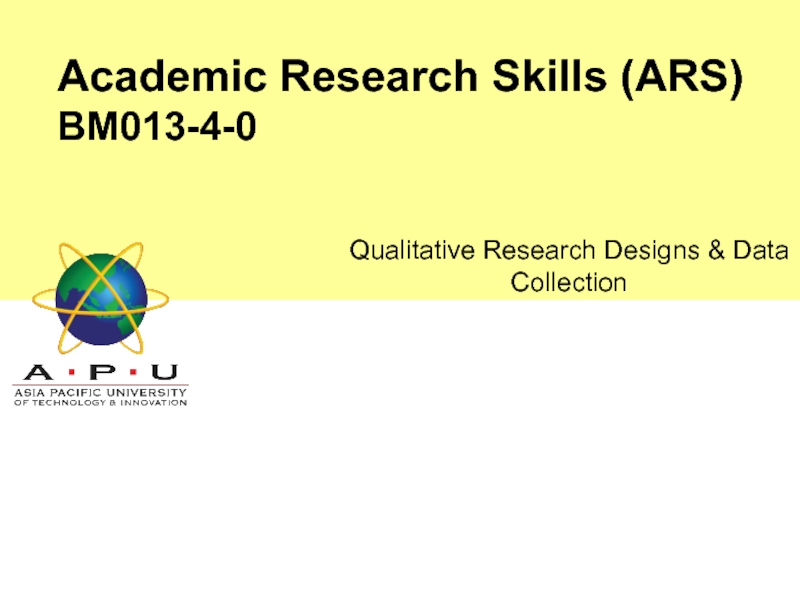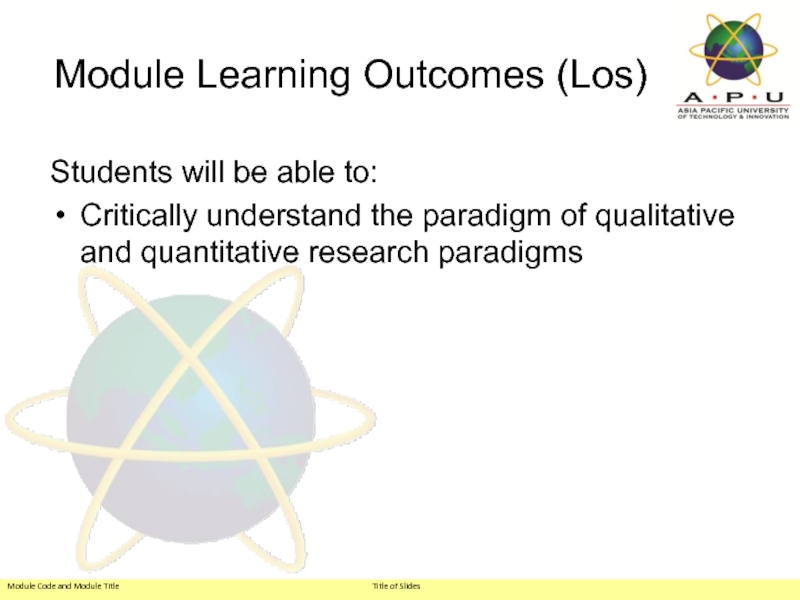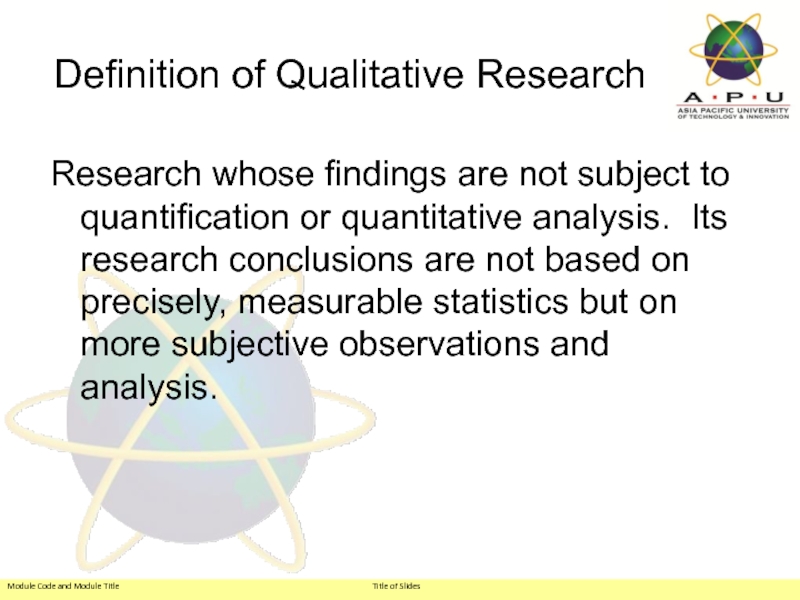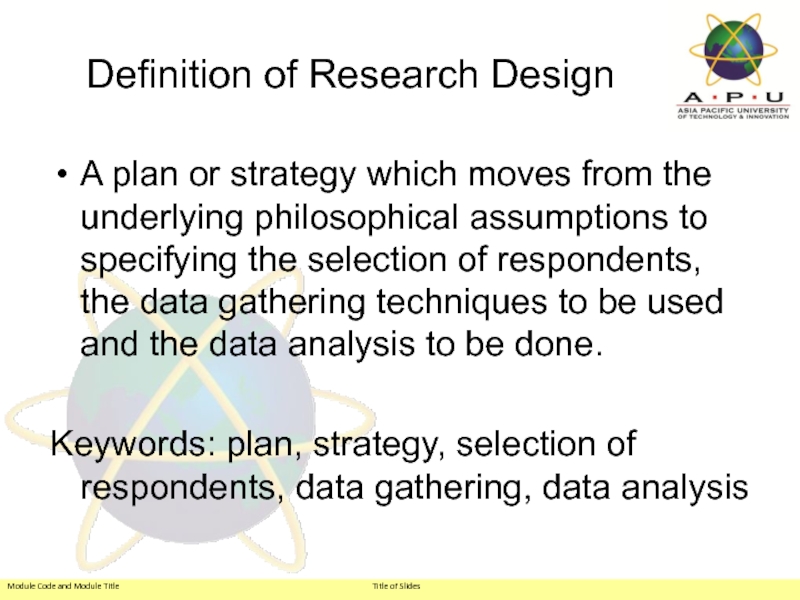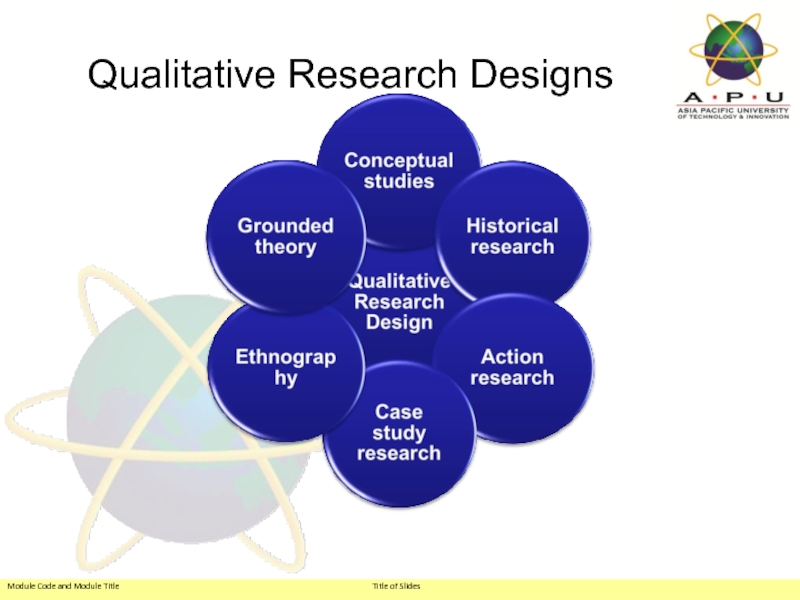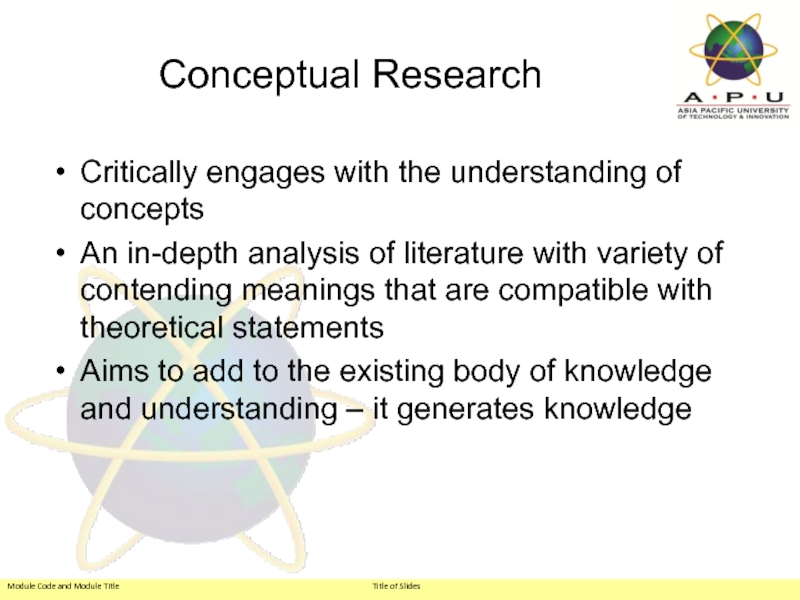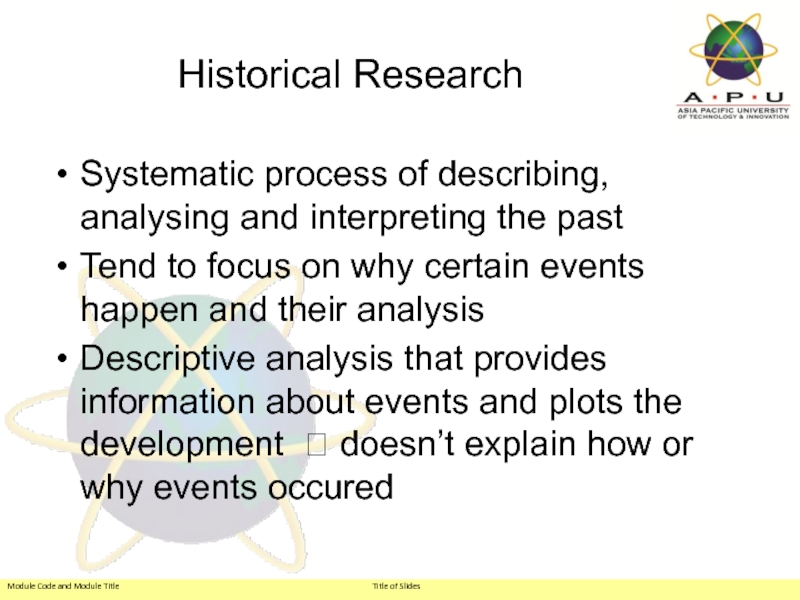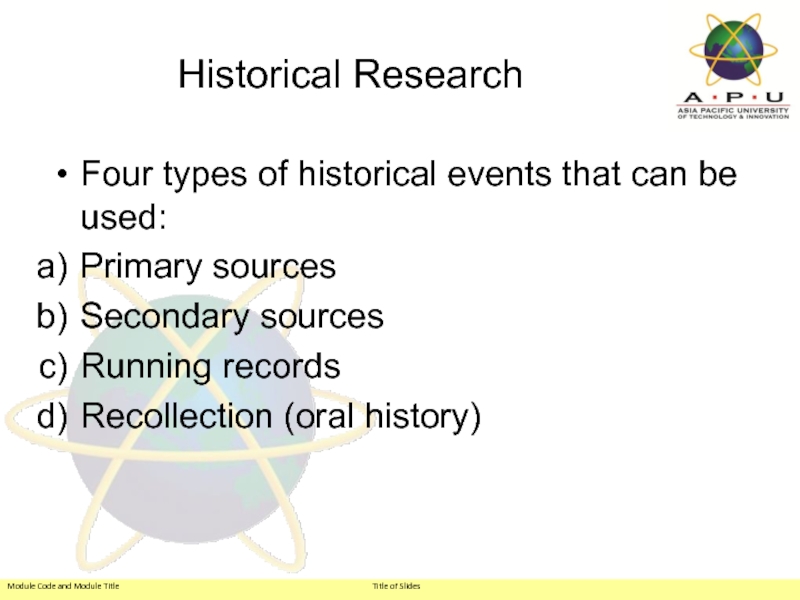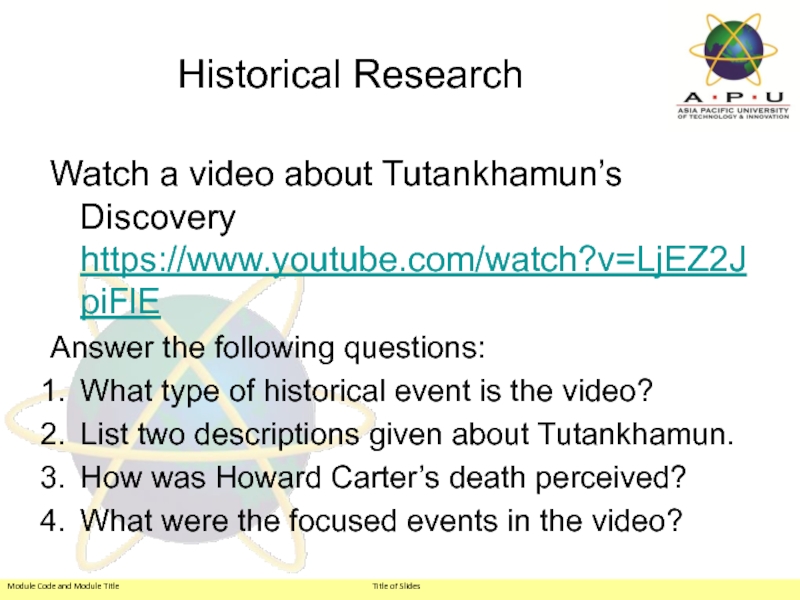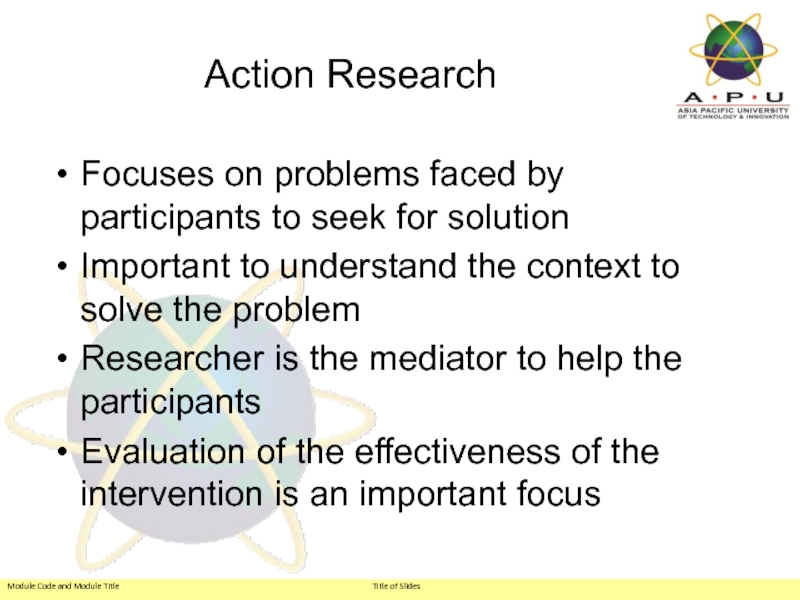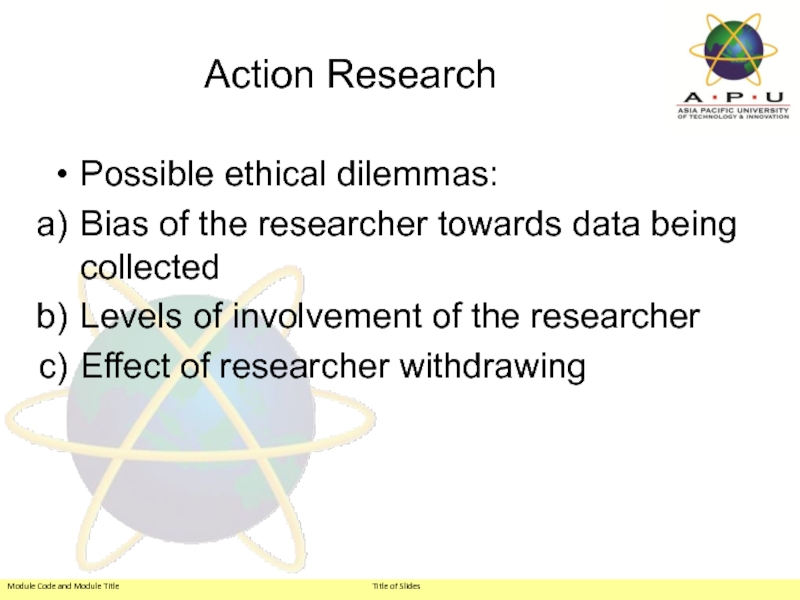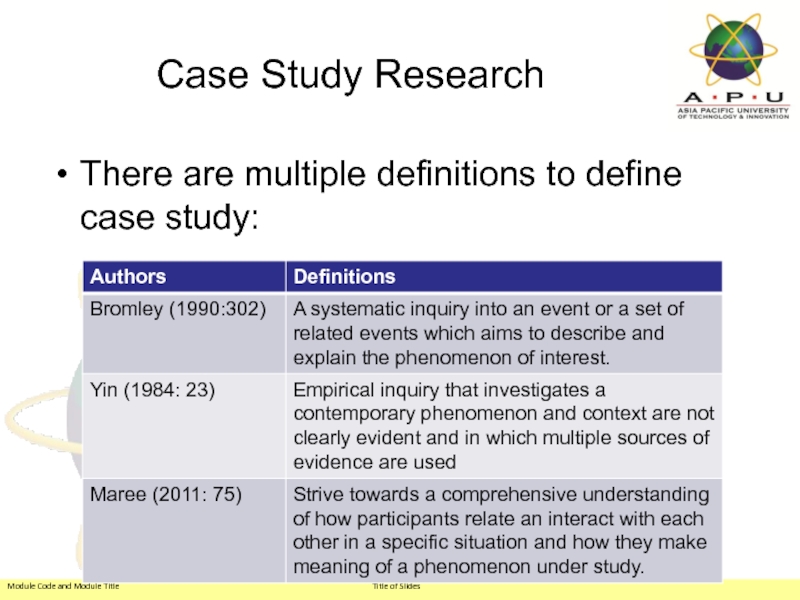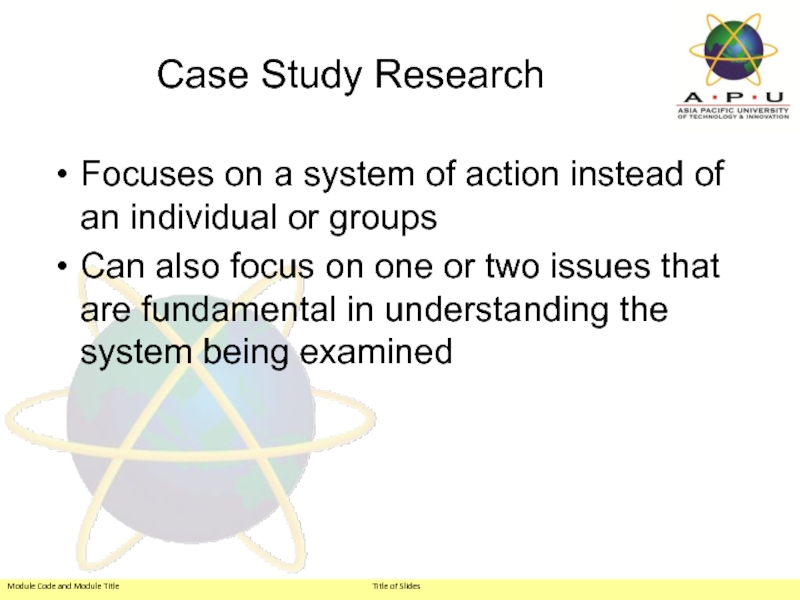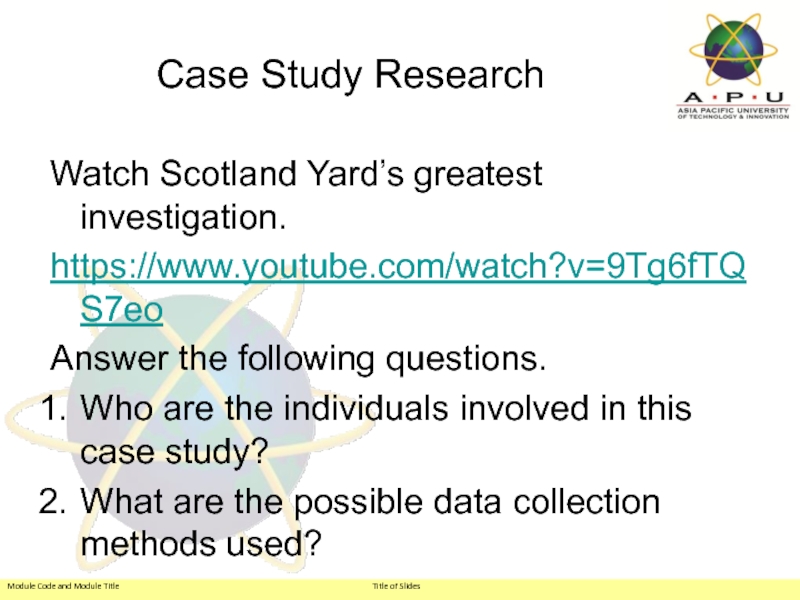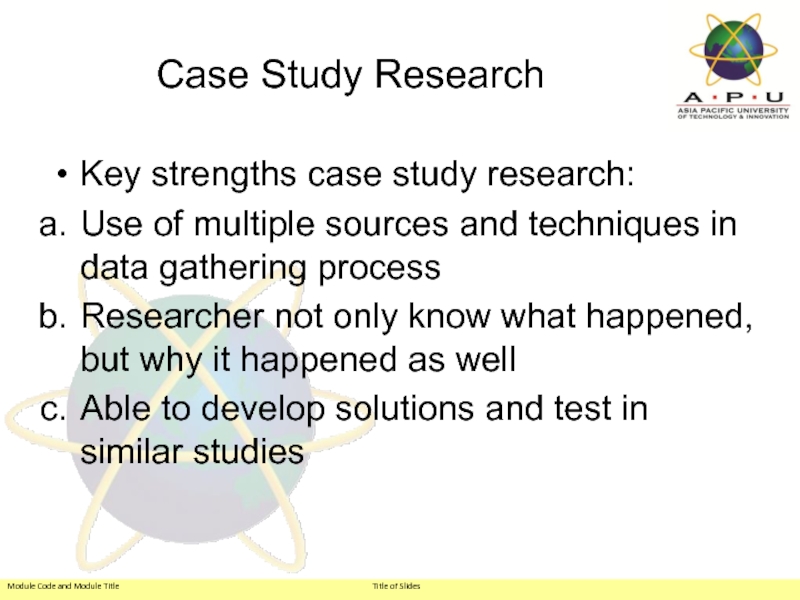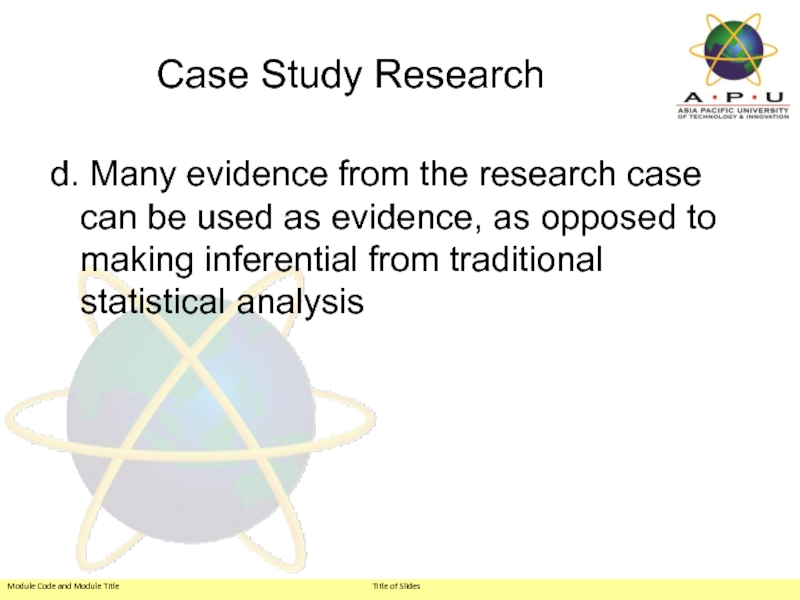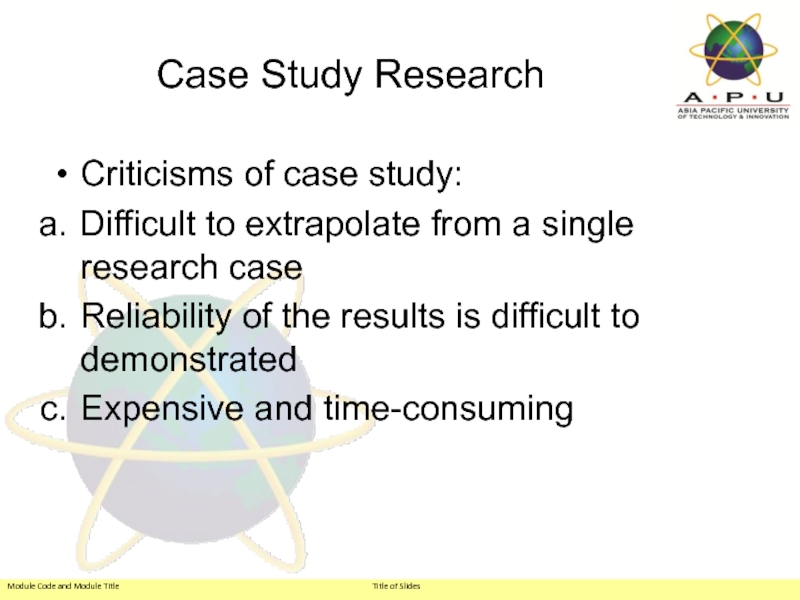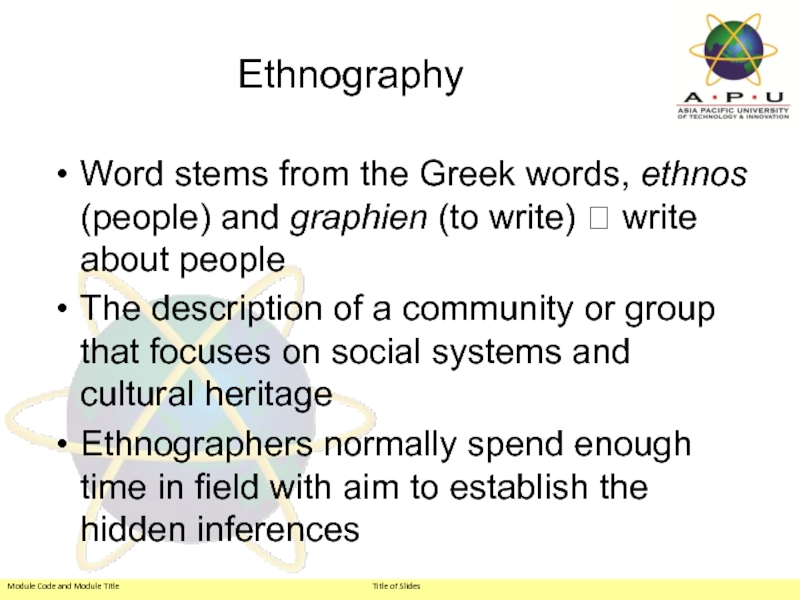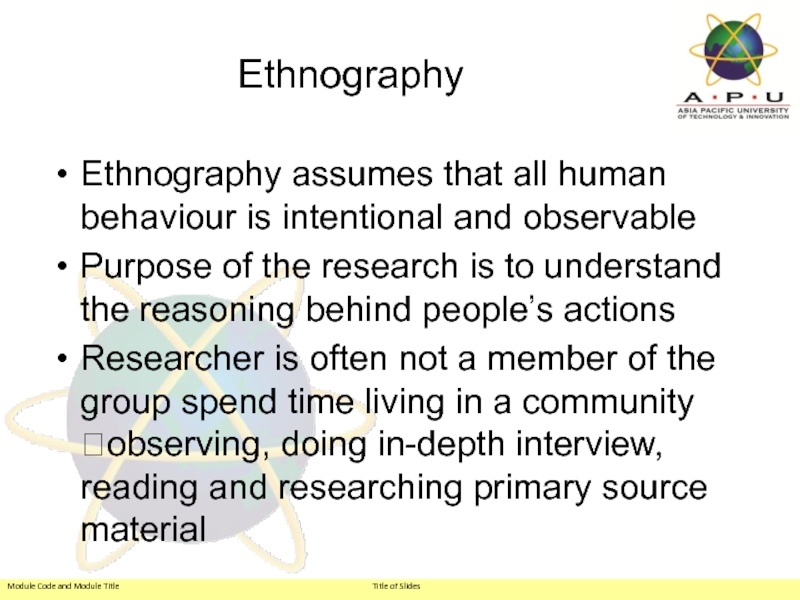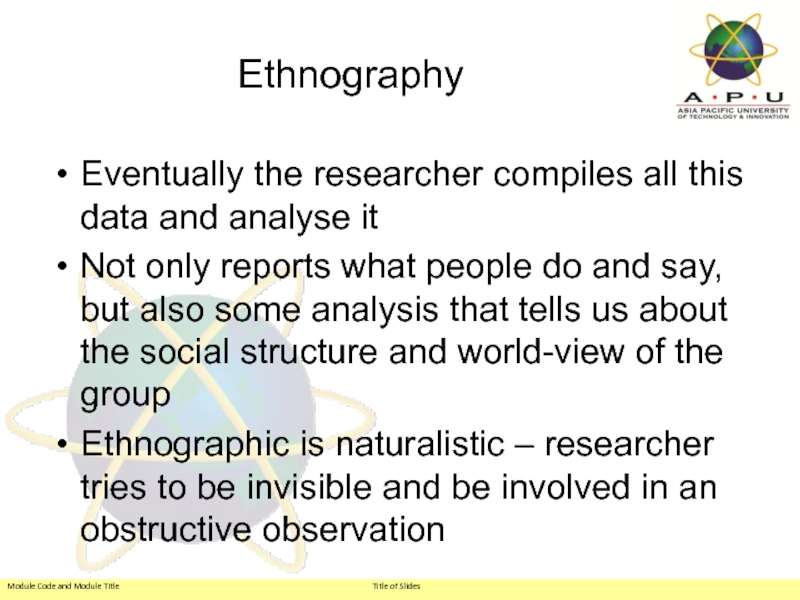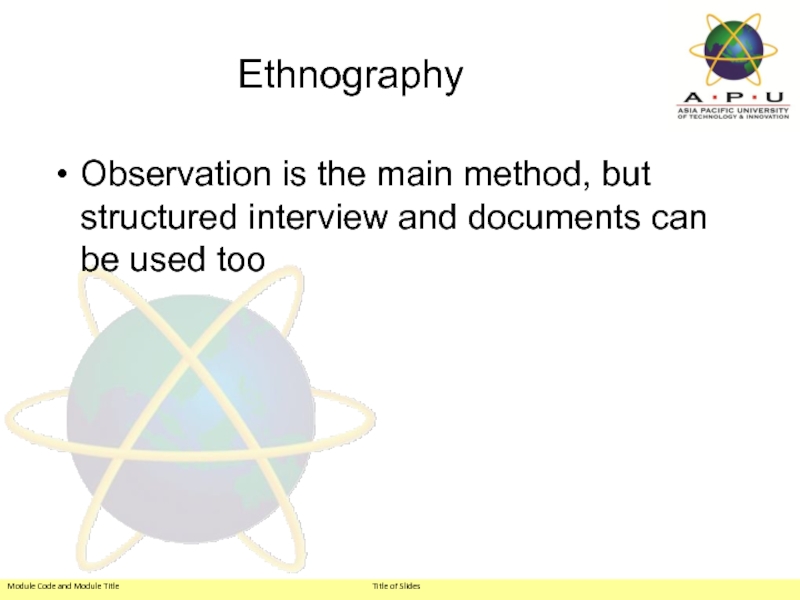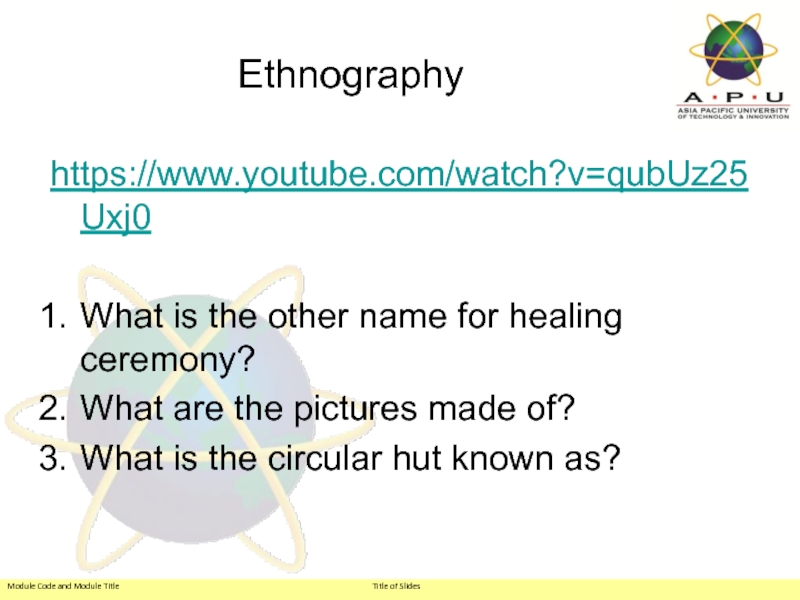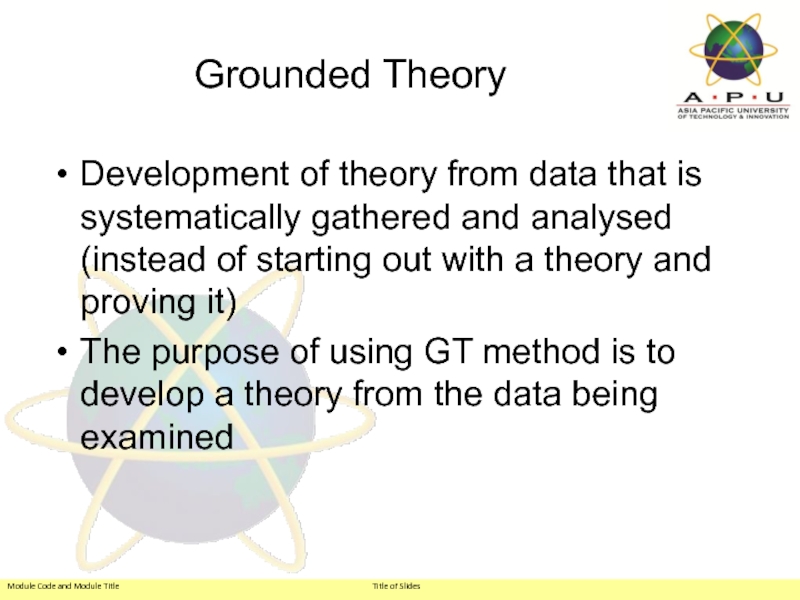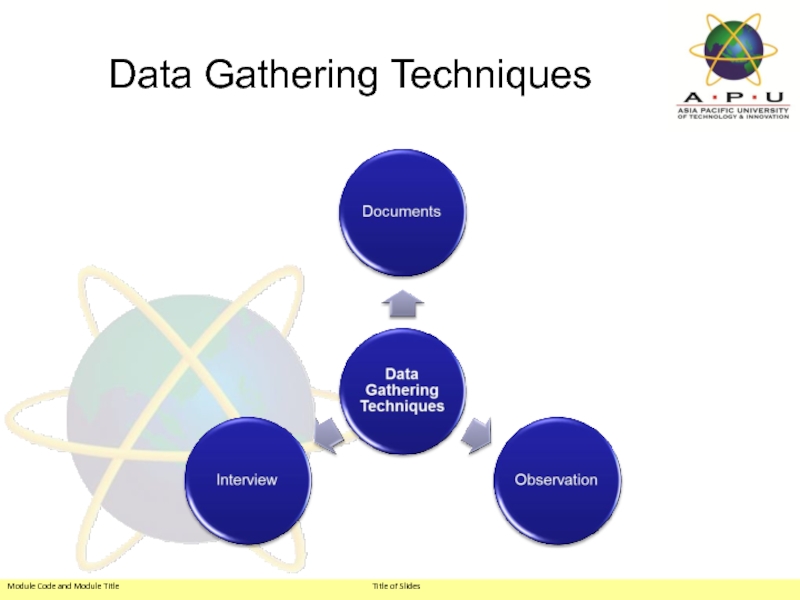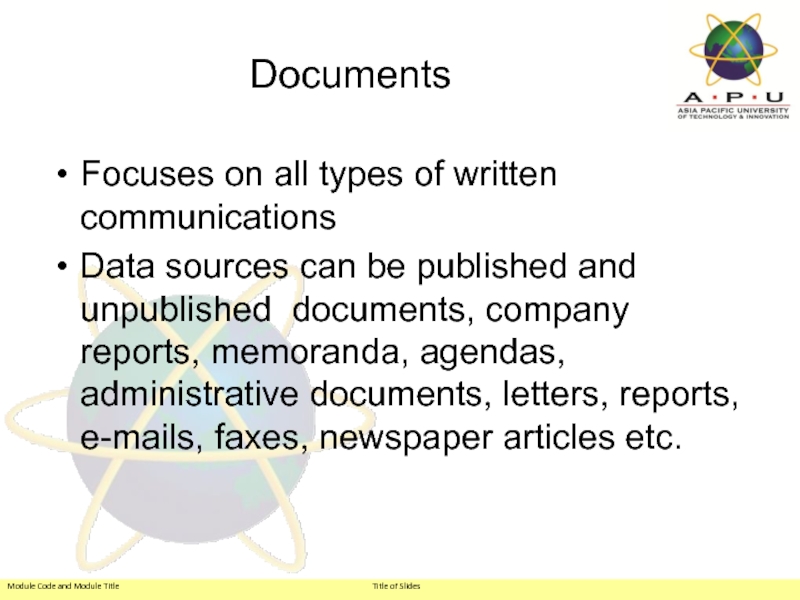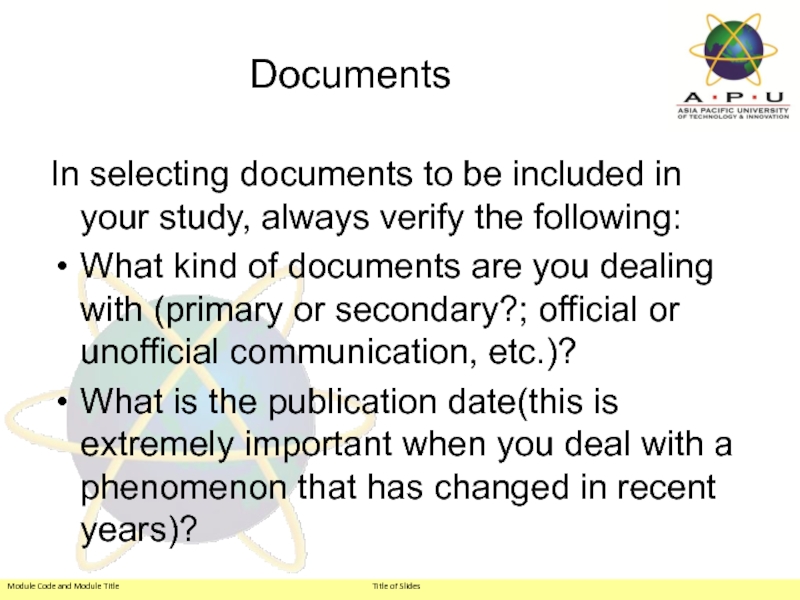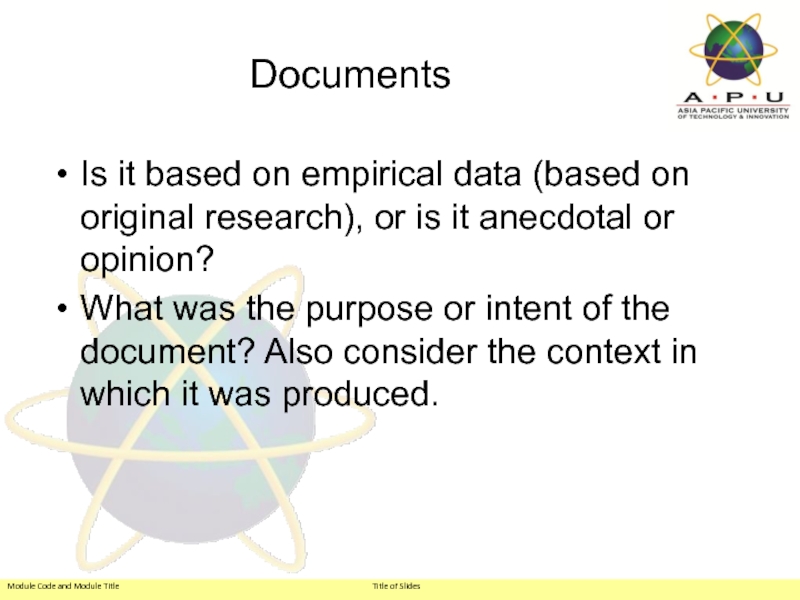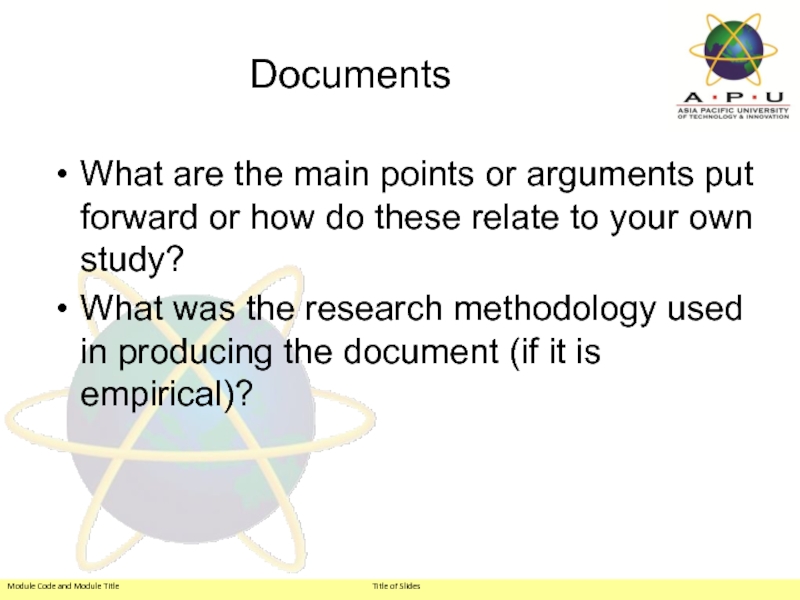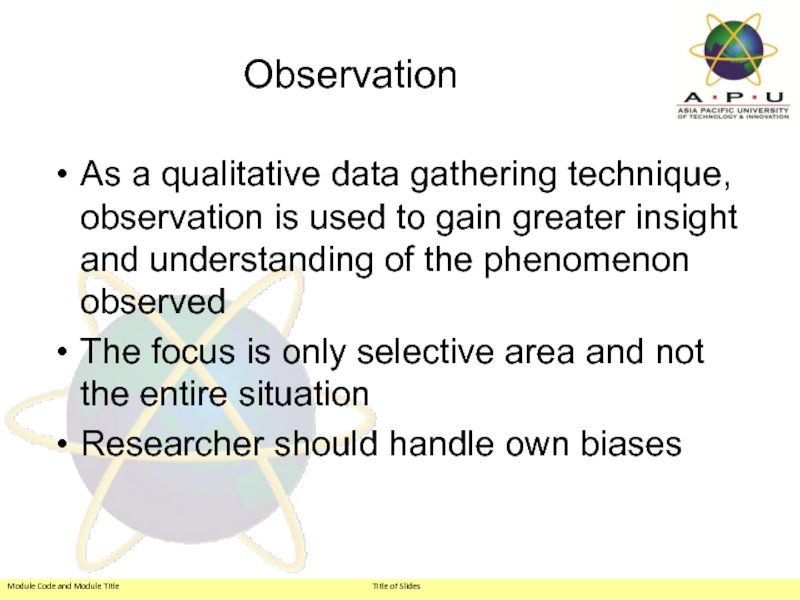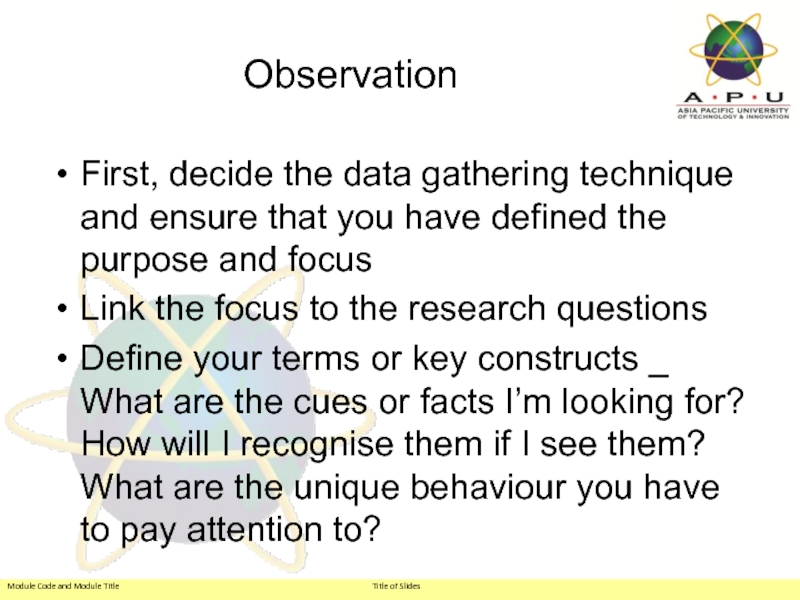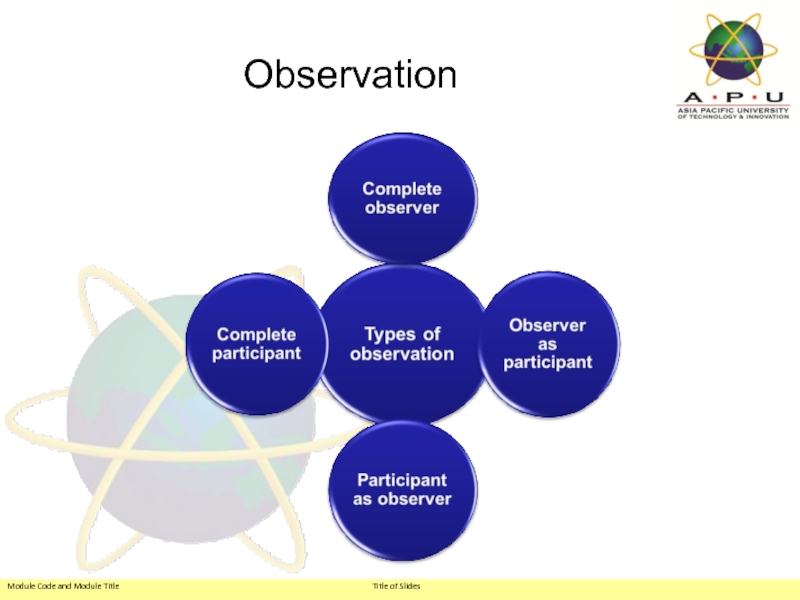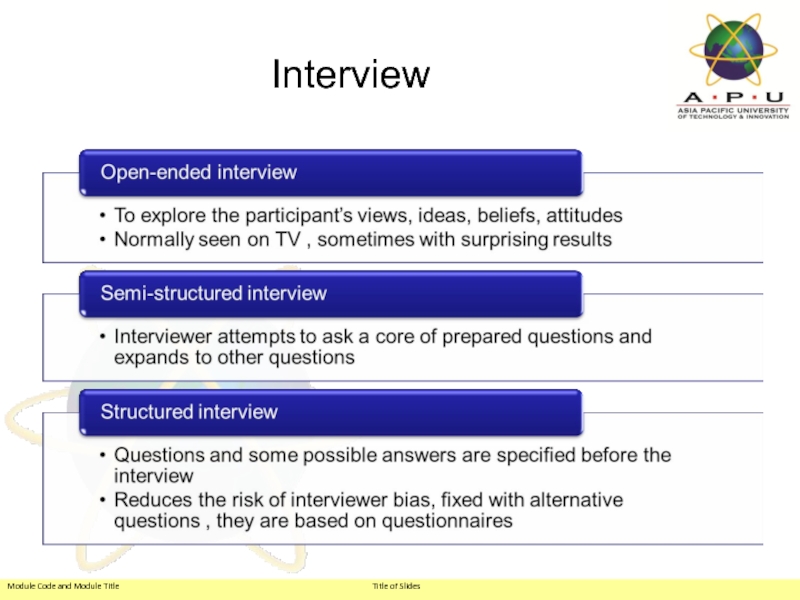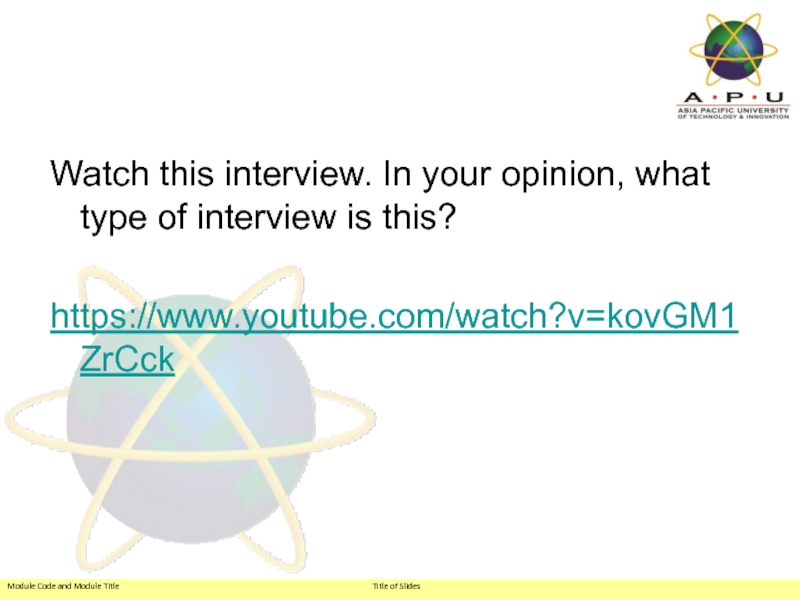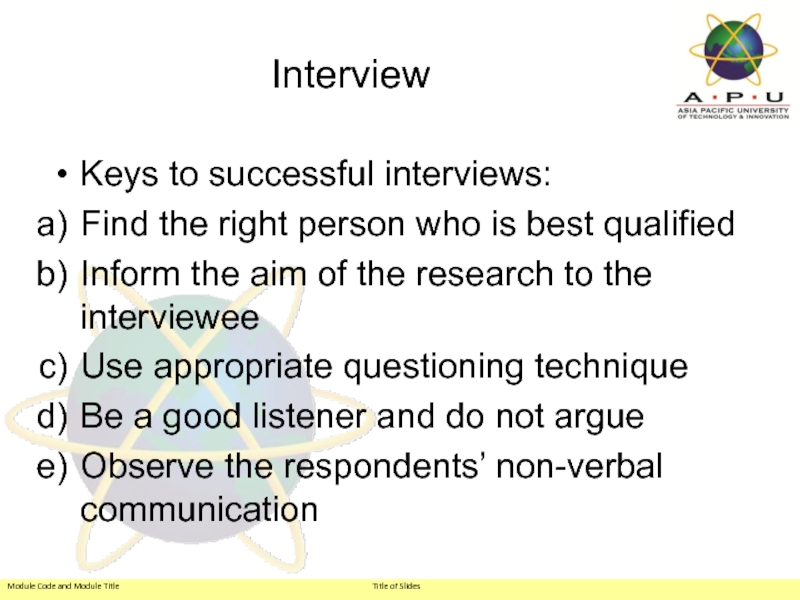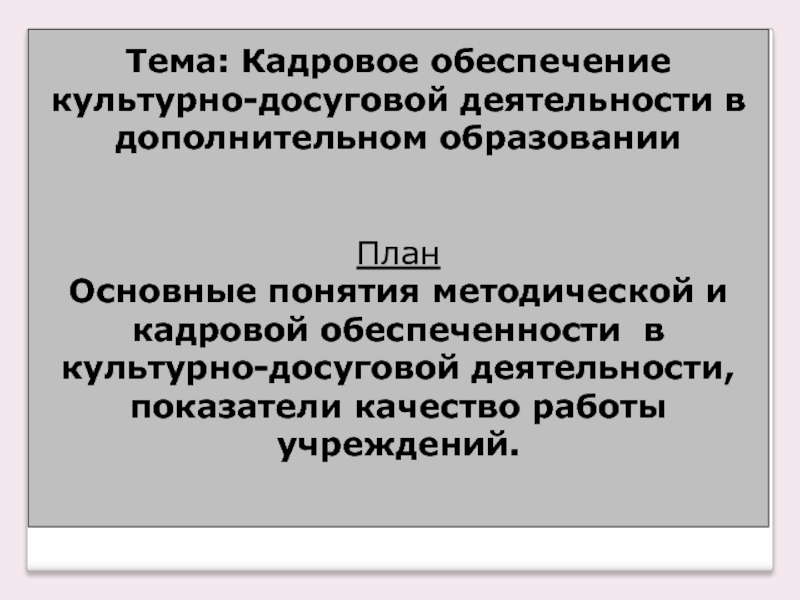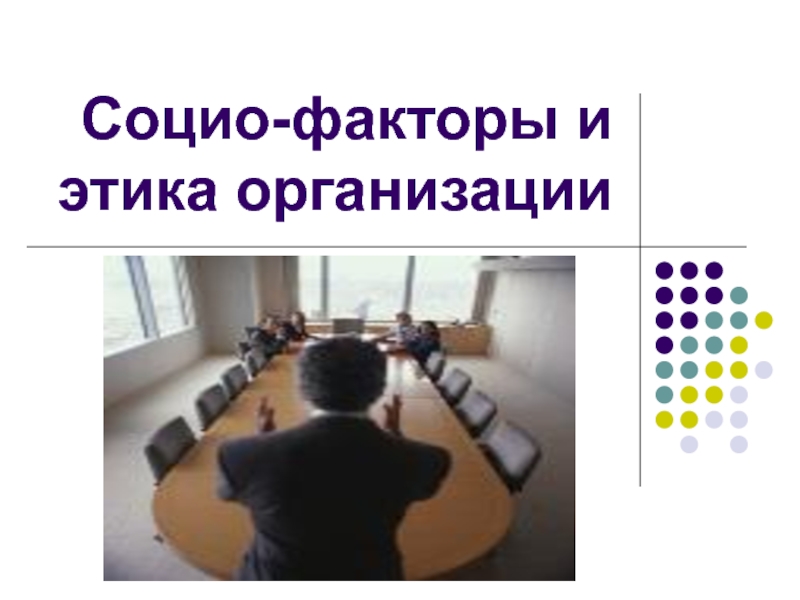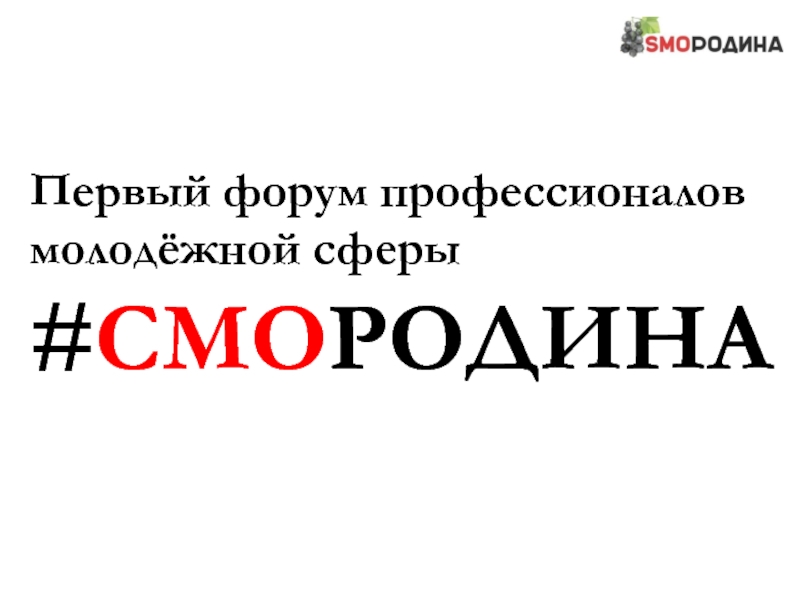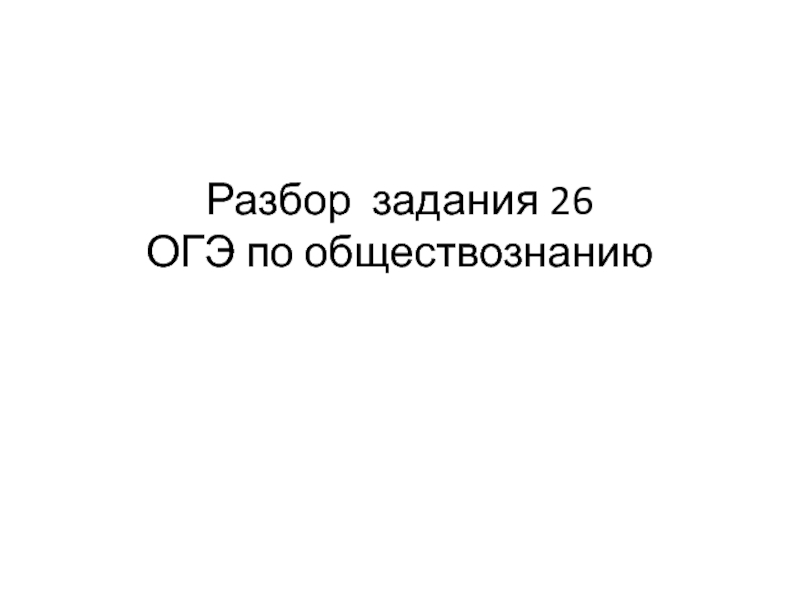- Главная
- Разное
- Дизайн
- Бизнес и предпринимательство
- Аналитика
- Образование
- Развлечения
- Красота и здоровье
- Финансы
- Государство
- Путешествия
- Спорт
- Недвижимость
- Армия
- Графика
- Культурология
- Еда и кулинария
- Лингвистика
- Английский язык
- Астрономия
- Алгебра
- Биология
- География
- Детские презентации
- Информатика
- История
- Литература
- Маркетинг
- Математика
- Медицина
- Менеджмент
- Музыка
- МХК
- Немецкий язык
- ОБЖ
- Обществознание
- Окружающий мир
- Педагогика
- Русский язык
- Технология
- Физика
- Философия
- Химия
- Шаблоны, картинки для презентаций
- Экология
- Экономика
- Юриспруденция
Qualitative Research Designs & Data Collection презентация
Содержание
- 1. Qualitative Research Designs & Data Collection
- 2. Module Learning Outcomes (Los) Students will be
- 3. Definition of Qualitative Research Research whose findings
- 4. Research Design When constructing a building there
- 5. Definition of Research Design A plan or
- 6. Qualitative Research Designs
- 7. Conceptual Research Critically engages with the understanding
- 8. Historical Research Systematic process of describing, analysing
- 9. Historical Research Four types of historical events
- 10. Historical Research Watch a video about Tutankhamun’s
- 11. Action Research Focuses on problems faced by
- 12. Action Research The process of conducting the research:
- 13. Action Research Possible ethical dilemmas: Bias of
- 14. Case Study Research There are multiple definitions to define case study:
- 15. Case Study Research Focuses on a system
- 16. Case Study Research Watch Scotland Yard’s greatest
- 17. 3. What was the intention of
- 18. Case Study Research Key strengths case study
- 19. Case Study Research d. Many evidence from
- 20. Case Study Research Criticisms of case study:
- 21. Ethnography Word stems from the Greek words,
- 22. Ethnography Ethnography assumes that all human behaviour
- 23. Ethnography Eventually the researcher compiles all this
- 24. Ethnography Observation is the main method, but
- 25. Ethnography https://www.youtube.com/watch?v=qubUz25Uxj0 What is the other
- 26. Grounded Theory Development of theory from data
- 27. Data Gathering Techniques
- 28. Documents Focuses on all types of written
- 29. Documents In selecting documents to be included
- 30. Documents Is it based on empirical data
- 31. Documents What are the main points or
- 32. Observation A systematic process of recording the
- 33. Observation As a qualitative data gathering technique,
- 34. Observation First, decide the data gathering technique
- 35. Observation
- 36. Interviews A two way conversation between researcher
- 37. Interview
- 38. Watch this interview. In your opinion,
- 39. Interview Keys to successful interviews: Find the
Слайд 2Module Learning Outcomes (Los)
Students will be able to:
Critically understand the paradigm
of qualitative and quantitative research paradigms
Слайд 3Definition of Qualitative Research
Research whose findings are not subject to quantification
or quantitative analysis. Its research conclusions are not based on precisely, measurable statistics but on more subjective observations and analysis.
Слайд 4Research Design
When constructing a building there is no point ordering materials
or setting critical dates for completion of project stages until we know what sort of building is being constructed. The first decision is whether we need a high rise office building, a factory for manufacturing machinery, a school, a residential home or an apartment block. Until this is done we cannot sketch a plan, obtain permits, work out a work schedule or order materials.
Слайд 5Definition of Research Design
A plan or strategy which moves from the
underlying philosophical assumptions to specifying the selection of respondents, the data gathering techniques to be used and the data analysis to be done.
Keywords: plan, strategy, selection of respondents, data gathering, data analysis
Keywords: plan, strategy, selection of respondents, data gathering, data analysis
Слайд 7Conceptual Research
Critically engages with the understanding of concepts
An in-depth analysis of
literature with variety of contending meanings that are compatible with theoretical statements
Aims to add to the existing body of knowledge and understanding – it generates knowledge
Aims to add to the existing body of knowledge and understanding – it generates knowledge
Слайд 8Historical Research
Systematic process of describing, analysing and interpreting the past
Tend to
focus on why certain events happen and their analysis
Descriptive analysis that provides information about events and plots the development ? doesn’t explain how or why events occured
Descriptive analysis that provides information about events and plots the development ? doesn’t explain how or why events occured
Слайд 9Historical Research
Four types of historical events that can be used:
Primary sources
Secondary
sources
Running records
Recollection (oral history)
Running records
Recollection (oral history)
Слайд 10Historical Research
Watch a video about Tutankhamun’s Discovery https://www.youtube.com/watch?v=LjEZ2JpiFlE
Answer the following questions:
What
type of historical event is the video?
List two descriptions given about Tutankhamun.
How was Howard Carter’s death perceived?
What were the focused events in the video?
List two descriptions given about Tutankhamun.
How was Howard Carter’s death perceived?
What were the focused events in the video?
Слайд 11Action Research
Focuses on problems faced by participants to seek for solution
Important
to understand the context to solve the problem
Researcher is the mediator to help the participants
Evaluation of the effectiveness of the intervention is an important focus
Researcher is the mediator to help the participants
Evaluation of the effectiveness of the intervention is an important focus
Слайд 13Action Research
Possible ethical dilemmas:
Bias of the researcher towards data being collected
Levels
of involvement of the researcher
Effect of researcher withdrawing
Effect of researcher withdrawing
Слайд 15Case Study Research
Focuses on a system of action instead of an
individual or groups
Can also focus on one or two issues that are fundamental in understanding the system being examined
Can also focus on one or two issues that are fundamental in understanding the system being examined
Слайд 16Case Study Research
Watch Scotland Yard’s greatest investigation.
https://www.youtube.com/watch?v=9Tg6fTQS7eo
Answer the following questions.
Who are
the individuals involved in this case study?
What are the possible data collection methods used?
What are the possible data collection methods used?
Слайд 17
3. What was the intention of the investigator?
4.What could have been
the possible challenges in conducting the investigation?
Слайд 18Case Study Research
Key strengths case study research:
Use of multiple sources and
techniques in data gathering process
Researcher not only know what happened, but why it happened as well
Able to develop solutions and test in similar studies
Researcher not only know what happened, but why it happened as well
Able to develop solutions and test in similar studies
Слайд 19Case Study Research
d. Many evidence from the research case can be
used as evidence, as opposed to making inferential from traditional statistical analysis
Слайд 20Case Study Research
Criticisms of case study:
Difficult to extrapolate from a single
research case
Reliability of the results is difficult to demonstrated
Expensive and time-consuming
Reliability of the results is difficult to demonstrated
Expensive and time-consuming
Слайд 21Ethnography
Word stems from the Greek words, ethnos (people) and graphien (to
write) ? write about people
The description of a community or group that focuses on social systems and cultural heritage
Ethnographers normally spend enough time in field with aim to establish the hidden inferences
The description of a community or group that focuses on social systems and cultural heritage
Ethnographers normally spend enough time in field with aim to establish the hidden inferences
Слайд 22Ethnography
Ethnography assumes that all human behaviour is intentional and observable
Purpose of
the research is to understand the reasoning behind people’s actions
Researcher is often not a member of the group spend time living in a community ?observing, doing in-depth interview, reading and researching primary source material
Researcher is often not a member of the group spend time living in a community ?observing, doing in-depth interview, reading and researching primary source material
Слайд 23Ethnography
Eventually the researcher compiles all this data and analyse it
Not only
reports what people do and say, but also some analysis that tells us about the social structure and world-view of the group
Ethnographic is naturalistic – researcher tries to be invisible and be involved in an obstructive observation
Ethnographic is naturalistic – researcher tries to be invisible and be involved in an obstructive observation
Слайд 24Ethnography
Observation is the main method, but structured interview and documents can
be used too
Слайд 25Ethnography
https://www.youtube.com/watch?v=qubUz25Uxj0
What is the other name for healing ceremony?
What are the pictures
made of?
What is the circular hut known as?
What is the circular hut known as?
Слайд 26Grounded Theory
Development of theory from data that is systematically gathered and
analysed (instead of starting out with a theory and proving it)
The purpose of using GT method is to develop a theory from the data being examined
The purpose of using GT method is to develop a theory from the data being examined
Слайд 28Documents
Focuses on all types of written communications
Data sources can be
published and unpublished documents, company reports, memoranda, agendas, administrative documents, letters, reports, e-mails, faxes, newspaper articles etc.
Слайд 29Documents
In selecting documents to be included in your study, always verify
the following:
What kind of documents are you dealing with (primary or secondary?; official or unofficial communication, etc.)?
What is the publication date(this is extremely important when you deal with a phenomenon that has changed in recent years)?
What kind of documents are you dealing with (primary or secondary?; official or unofficial communication, etc.)?
What is the publication date(this is extremely important when you deal with a phenomenon that has changed in recent years)?
Слайд 30Documents
Is it based on empirical data (based on original research), or
is it anecdotal or opinion?
What was the purpose or intent of the document? Also consider the context in which it was produced.
What was the purpose or intent of the document? Also consider the context in which it was produced.
Слайд 31Documents
What are the main points or arguments put forward or how
do these relate to your own study?
What was the research methodology used in producing the document (if it is empirical)?
What was the research methodology used in producing the document (if it is empirical)?
Слайд 32Observation
A systematic process of recording the behavioural patterns of participants, objects
and occurrences without necessarily questioning
An everyday activity whereby we use our senses (seeing, hearing, touching, smelling, tasting) – but also intuition to gather bits of data
An everyday activity whereby we use our senses (seeing, hearing, touching, smelling, tasting) – but also intuition to gather bits of data
Слайд 33Observation
As a qualitative data gathering technique, observation is used to gain
greater insight and understanding of the phenomenon observed
The focus is only selective area and not the entire situation
Researcher should handle own biases
The focus is only selective area and not the entire situation
Researcher should handle own biases
Слайд 34Observation
First, decide the data gathering technique and ensure that you have
defined the purpose and focus
Link the focus to the research questions
Define your terms or key constructs _ What are the cues or facts I’m looking for? How will I recognise them if I see them? What are the unique behaviour you have to pay attention to?
Link the focus to the research questions
Define your terms or key constructs _ What are the cues or facts I’m looking for? How will I recognise them if I see them? What are the unique behaviour you have to pay attention to?
Слайд 36Interviews
A two way conversation between researcher and participant/s
Objective is to see
the world through the eyes of the participant & obtain descriptive questions
Слайд 38
Watch this interview. In your opinion, what type of interview is
this?
https://www.youtube.com/watch?v=kovGM1ZrCck
https://www.youtube.com/watch?v=kovGM1ZrCck
Слайд 39Interview
Keys to successful interviews:
Find the right person who is best qualified
Inform
the aim of the research to the interviewee
Use appropriate questioning technique
Be a good listener and do not argue
Observe the respondents’ non-verbal communication
Use appropriate questioning technique
Be a good listener and do not argue
Observe the respondents’ non-verbal communication
